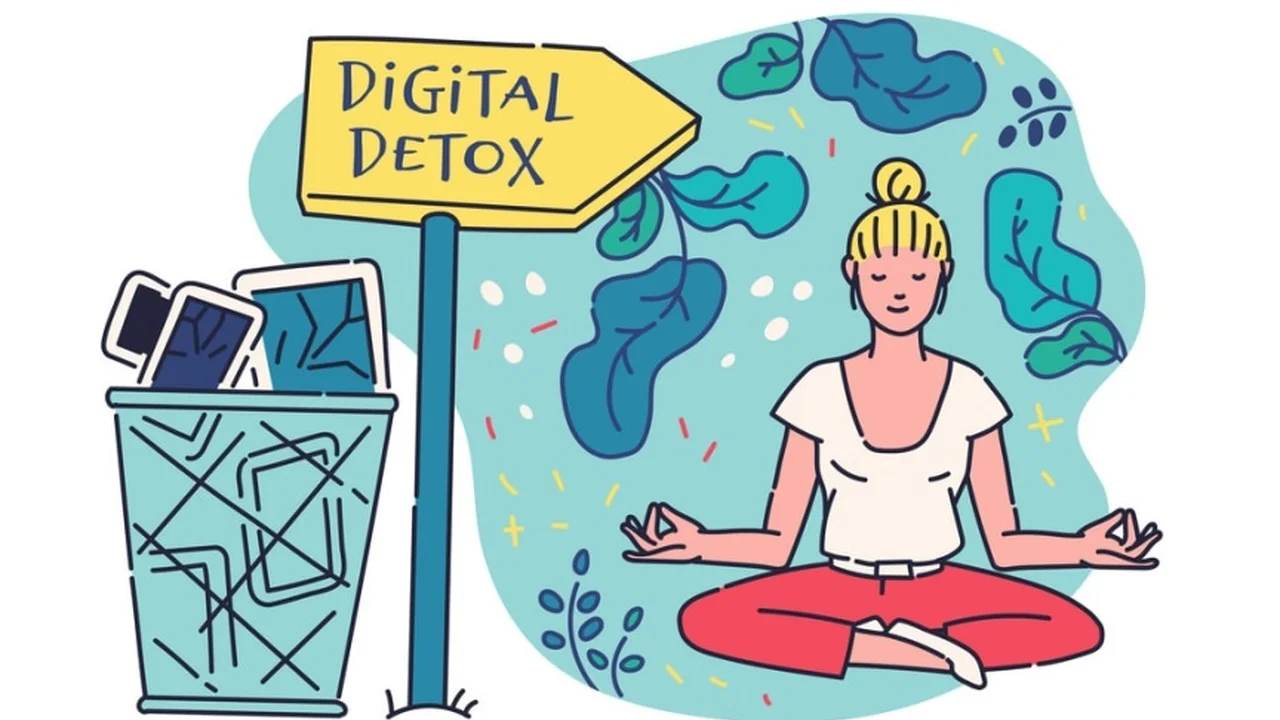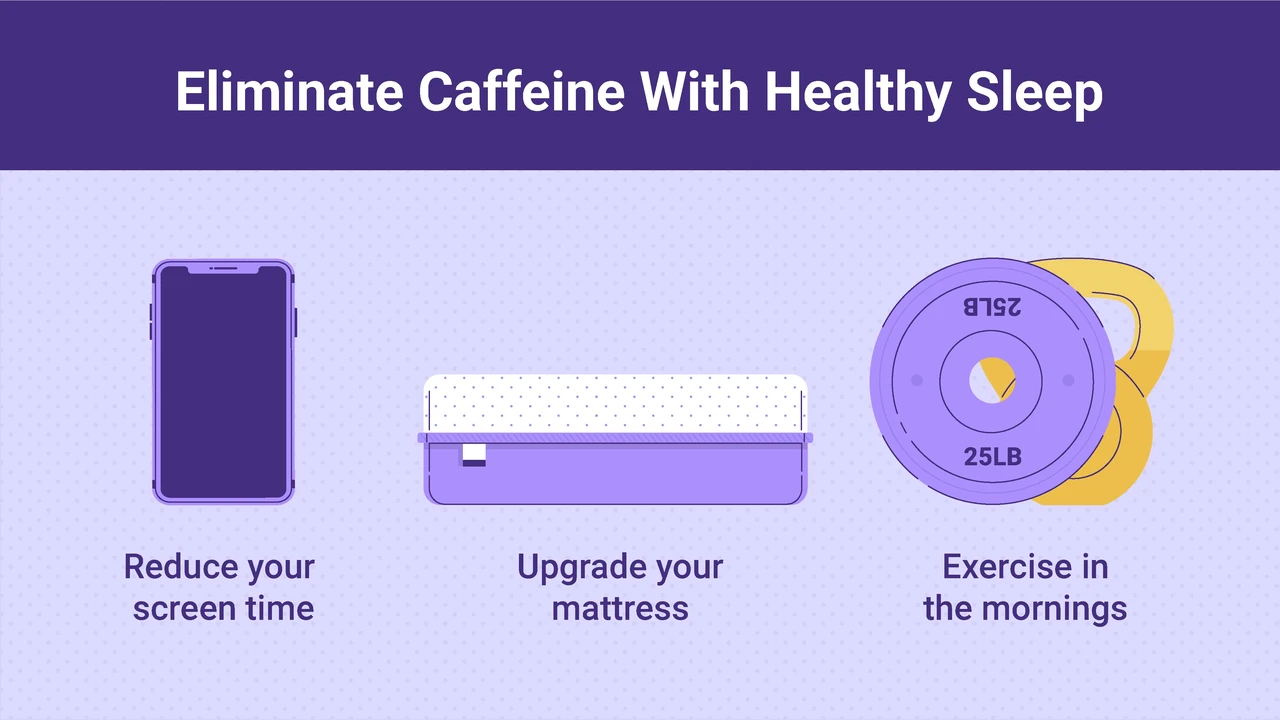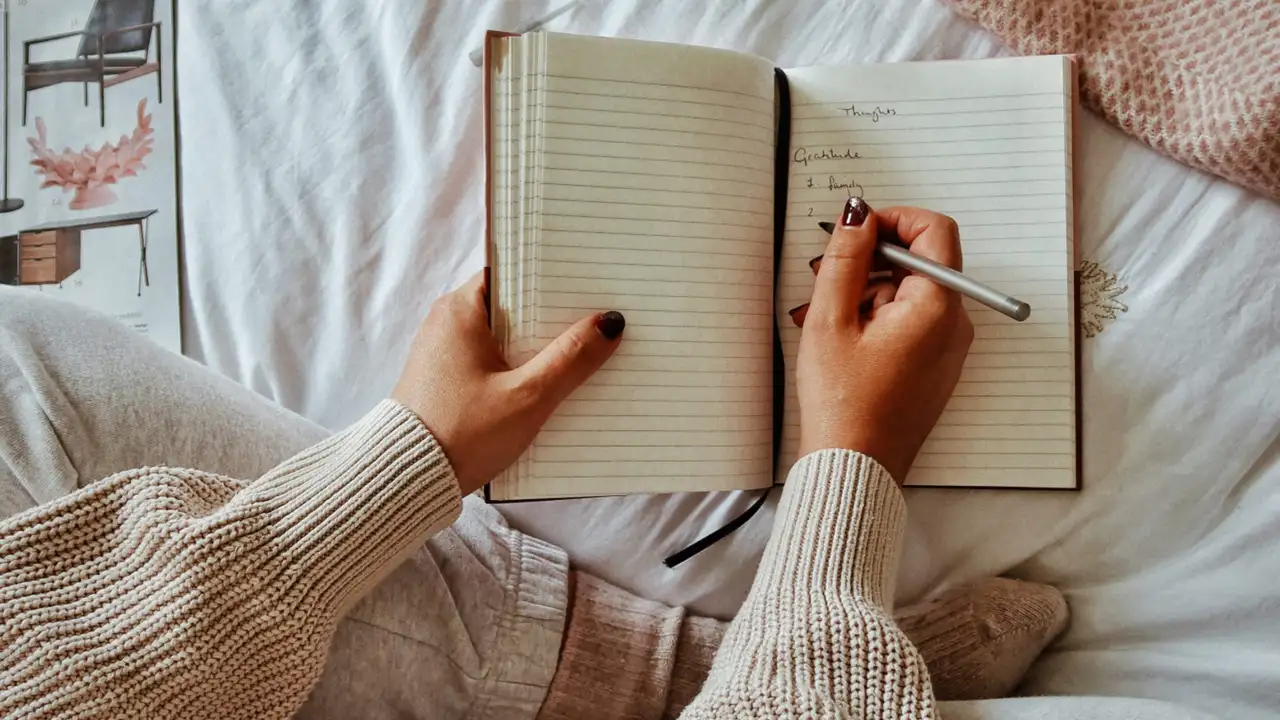Creating a Digital Detox for Sleep
Implement a digital detox before bed to reduce blue light exposure. Disconnect to reconnect with restful sleep.

Implement a digital detox before bed to reduce blue light exposure. Disconnect to reconnect with restful sleep.
The Digital Deluge and Your Sleep Health
In our hyper-connected world, screens are ubiquitous. From the moment we wake up to the last minute before we close our eyes, we're bombarded by notifications, emails, social media feeds, and endless entertainment. While technology offers incredible convenience and connection, its constant presence, especially in the hours leading up to bedtime, is wreaking havoc on our sleep. This isn't just about feeling wired; it's a physiological disruption caused primarily by the blue light emitted from our devices.
Blue light, a segment of the visible light spectrum, plays a crucial role in regulating our circadian rhythm – our internal 24-hour clock that tells us when to be awake and when to sleep. During the day, exposure to blue light is beneficial; it boosts attention, reaction times, and mood. However, when we expose ourselves to blue light in the evening, our brains get confused. They interpret this light as daylight, suppressing the production of melatonin, the hormone responsible for signaling to our bodies that it's time to wind down and prepare for sleep. The result? Difficulty falling asleep, fragmented sleep, and a feeling of grogginess the next morning.
Beyond blue light, the content we consume on our devices also contributes to sleep problems. Engaging with stimulating content – be it work emails, thrilling movies, or heated online discussions – keeps our minds active and alert, making it challenging to transition into a relaxed state conducive to sleep. The constant 'ding' of notifications, even if silenced, can create a subconscious anxiety about missing out, further hindering relaxation.
Understanding Blue Light and Melatonin Suppression
Let's dive a bit deeper into the science. Our eyes contain specialized photoreceptors called intrinsically photosensitive retinal ganglion cells (ipRGCs). These cells are particularly sensitive to blue light. When these cells detect blue light, they send signals to the suprachiasmatic nucleus (SCN) in the brain, which acts as our body's master clock. The SCN, in turn, regulates the pineal gland, which produces melatonin. In the presence of blue light, the SCN signals the pineal gland to reduce melatonin production. This is a natural and necessary process during the day, but problematic at night.
Studies have shown that even short periods of exposure to blue light in the evening can significantly delay melatonin onset. For example, research published in the Proceedings of the National Academy of Sciences found that using light-emitting electronic devices before bedtime prolonged the time it took to fall asleep, reduced REM sleep, and increased alertness the following morning. The impact isn't just on falling asleep; it affects the quality and architecture of our sleep cycles, leading to less restorative rest.
The Benefits of a Digital Detox for Restful Sleep
Implementing a digital detox isn't about abandoning technology entirely; it's about setting healthy boundaries, especially in the hours leading up to sleep. The benefits are profound and extend beyond just falling asleep faster:
- Improved Sleep Onset and Quality: By reducing blue light exposure, your body can naturally produce melatonin, signaling to your brain that it's time to sleep. This leads to falling asleep more easily and experiencing deeper, more restorative sleep cycles.
- Reduced Eye Strain and Headaches: Staring at screens for extended periods, especially in dim light, can lead to digital eye strain, characterized by dry eyes, blurred vision, and headaches. A detox gives your eyes a much-needed break.
- Enhanced Mental Clarity and Focus: Disconnecting allows your brain to decompress and process the day's information without constant external stimulation. This can lead to improved cognitive function and focus the next day.
- Lower Stress and Anxiety Levels: The constant stream of information and notifications can contribute to feelings of overwhelm and anxiety. Stepping away from devices provides a mental break, reducing stress and promoting relaxation.
- More Meaningful Connections: When you're not glued to a screen, you're more present for real-life interactions with family, friends, or even yourself. This can strengthen relationships and foster a sense of well-being.
- Rediscovery of Hobbies: A digital detox opens up time for other activities you might have neglected, such as reading a physical book, listening to music, journaling, or engaging in creative pursuits.
Practical Strategies for Your Digital Detox Journey
So, how do you actually implement a digital detox? It doesn't have to be an all-or-nothing approach. Start small and gradually increase your detox period. Here are some practical strategies:
Set a Digital Curfew for Better Sleep Habits
This is perhaps the most crucial step. Decide on a specific time each evening when all screens go off. For most people, 1-2 hours before bedtime is a good starting point. If you typically go to bed at 10 PM, aim to put away your phone, tablet, and laptop by 8 PM or 9 PM. Stick to this curfew consistently, even on weekends. This consistency helps regulate your circadian rhythm.
Create a Screen-Free Bedroom Environment
Your bedroom should be a sanctuary for sleep, not a tech hub. Remove all electronic devices from your bedroom, including TVs, laptops, tablets, and especially your smartphone. If you use your phone as an alarm, consider investing in a traditional alarm clock. The temptation to check notifications or scroll through social media is significantly reduced when the device isn't within arm's reach.
Embrace Analog Alternatives for Evening Relaxation
Once you've put away your devices, what do you do? This is where you can rediscover relaxing analog activities. Instead of scrolling, try:
- Reading a Physical Book: The tactile experience of a book, combined with the absence of blue light, is incredibly calming.
- Listening to Music or Podcasts: Choose calming music or a soothing podcast. Many apps offer sleep stories or guided meditations.
- Journaling: Write down your thoughts, worries, or gratitude. This can help clear your mind before bed.
- Gentle Stretching or Yoga: A few minutes of light stretching can release tension and prepare your body for sleep.
- Taking a Warm Bath or Shower: The drop in body temperature after a warm bath can promote sleepiness.
- Engaging in Conversation: Spend quality time talking with family members or housemates without the distraction of screens.
Utilize Device Settings and Apps for Digital Well-being
While the goal is to disconnect, some technology can actually help. Most smartphones and computers now have built-in features to reduce blue light:
- Night Shift/Night Light: Enable these settings on your phone, tablet, and computer. They automatically shift the colors of your display to the warmer end of the spectrum after sunset, reducing blue light emission. While not a complete substitute for putting devices away, they can mitigate some of the negative effects if you absolutely must use a screen.
- Grayscale Mode: Turning your screen to grayscale can make it less appealing and addictive, reducing the urge to endlessly scroll through colorful apps.
- App Limits/Downtime Features: Use features like 'Screen Time' on iOS or 'Digital Wellbeing' on Android to set limits on app usage or schedule downtime when certain apps are inaccessible.
Recommended Products to Aid Your Digital Detox and Sleep
While the core of a digital detox is behavioral change, certain products can support your efforts, especially if you find it challenging to completely eliminate screens or need alternatives for specific functions.
Blue Light Blocking Glasses for Evening Screen Use
If you absolutely cannot avoid screens in the evening (e.g., for work or essential communication), blue light blocking glasses can be a helpful tool. These glasses have lenses that filter out a significant portion of blue light, reducing its impact on melatonin production. It's important to note that not all blue light glasses are created equal; look for ones that block a high percentage of blue light, especially in the 450-495nm range.
- Product 1: Swannies Blue Light Blocking Glasses (Amber Lenses)
- Description: Swannies are well-regarded for their effective blue light filtration. The amber lenses block nearly 100% of blue light, making them ideal for use in the 1-2 hours before bed. They come in various styles (classic, aviator, clip-on).
- Use Case: For individuals who must use a computer or watch TV in the evening but want to minimize blue light exposure.
- Comparison: More effective than clear-lensed blue light glasses for evening use due to higher blue light blockage.
- Price Range: $60 - $100 USD
- Product 2: Uvex Skyper Blue Light Blocking Glasses (Orange Lenses)
- Description: These are a more budget-friendly option, often used in industrial settings but highly effective for personal use. Their bright orange lenses block over 98% of blue light. They might not be the most stylish, but they are highly functional.
- Use Case: A cost-effective solution for maximum blue light blockage, especially for reading on e-readers or using a computer before bed.
- Comparison: Excellent performance for the price, though less aesthetically pleasing than designer options.
- Price Range: $10 - $20 USD
Dedicated E-Readers for Screen-Free Reading
If you love to read before bed but want to avoid the blue light of tablets or phones, a dedicated e-reader with an E Ink display is an excellent alternative. E Ink screens mimic the appearance of ink on paper and do not emit blue light. Many models also have adjustable warm front lights for reading in the dark, which are much gentler on the eyes than backlit screens.
- Product 1: Kindle Paperwhite
- Description: A popular choice, the Kindle Paperwhite features a glare-free E Ink display and an adjustable warm light. It's waterproof, making it suitable for reading in the bath.
- Use Case: Ideal for avid readers who want a lightweight, portable device for reading physical books without the blue light.
- Comparison: Offers a good balance of features and price compared to more premium e-readers.
- Price Range: $140 - $160 USD
- Product 2: Kobo Libra 2
- Description: The Kobo Libra 2 offers a similar E Ink experience with an adjustable ComfortLight PRO (warm light) and physical page-turn buttons, which some users prefer. It also supports a wider range of file formats.
- Use Case: Great for readers who prefer physical buttons or want more flexibility with file types.
- Comparison: A strong competitor to Kindle, often preferred by those who want to avoid Amazon's ecosystem.
- Price Range: $190 - $210 USD
Traditional Alarm Clocks for a Phone-Free Bedroom
One of the biggest reasons people keep their phones in the bedroom is for the alarm function. Replacing your phone alarm with a dedicated alarm clock is a simple yet effective step towards a digital detox.
- Product 1: Philips SmartSleep Sleep and Wake-Up Light
- Description: This alarm clock simulates a natural sunrise, gradually brightening your room before your alarm time. It also offers sunset simulation for winding down and various natural sounds.
- Use Case: For those who want a gentle, natural wake-up experience without the harshness of a phone alarm.
- Comparison: More advanced than a basic alarm clock, offering light therapy benefits.
- Price Range: $100 - $180 USD
- Product 2: Marathon Atomic Self-Setting Alarm Clock
- Description: A simple, reliable, and self-setting alarm clock that uses atomic time for accuracy. It has a clear display and basic alarm functions.
- Use Case: For individuals who need a straightforward, no-frills alarm clock to keep their phone out of the bedroom.
- Comparison: A basic, highly functional alternative to a smartphone alarm.
- Price Range: $20 - $30 USD
Sound Machines for Relaxing Sleep Environments
Instead of using your phone for white noise or sleep sounds, a dedicated sound machine can provide consistent, non-stimulating audio to help you relax and block out disruptive noises.
- Product 1: Hatch Restore 2
- Description: This device combines a sound machine, smart light, and alarm clock. It offers a wide variety of sleep sounds, guided meditations, and customizable light routines for both winding down and waking up.
- Use Case: For those seeking an all-in-one bedside companion that promotes relaxation and gentle waking without a phone.
- Comparison: A premium option with extensive features, integrating light and sound therapy.
- Price Range: $130 - $200 USD
- Product 2: LectroFan Micro2 Sleep Sound Machine
- Description: A compact and portable sound machine offering 11 non-looping fan sounds and white noise variations. It's great for travel or minimalist setups.
- Use Case: For travelers or those who prefer a simple, effective white noise machine without extra features.
- Comparison: Excellent portability and sound quality for its size, focusing purely on sound.
- Price Range: $30 - $40 USD
Overcoming Challenges in Your Digital Detox Journey
Embarking on a digital detox can be challenging, especially in the beginning. You might experience FOMO (Fear Of Missing Out), restlessness, or even a sense of boredom. Here are some tips for overcoming common hurdles:
Start Small and Build Gradually for Sustainable Change
Don't try to go from 24/7 screen time to zero overnight. Begin with a 30-minute detox before bed, then extend it to an hour, and eventually two hours. Small, consistent changes are more likely to stick than drastic, unsustainable ones.
Communicate Your Detox Plans to Family and Friends
Let your loved ones know about your digital curfew. This helps manage expectations and reduces the likelihood of them trying to contact you during your detox period. Explain why you're doing it – for better sleep and well-being – and they'll likely be supportive.
Find Engaging Alternatives to Fill the Void
Boredom is a common reason people revert to screens. Have a list of non-digital activities ready to go. This could be anything from working on a puzzle, knitting, drawing, playing a board game, or simply having a conversation. The key is to find activities that genuinely engage you and help you relax.
Be Patient and Kind to Yourself During the Transition
There will be days when you slip up, and that's okay. Don't let one missed detox period derail your entire effort. Acknowledge it, learn from it, and recommit the next day. Building new habits takes time and patience. Focus on progress, not perfection.
Reflect on the Positive Changes in Your Sleep and Well-being
Periodically take stock of how the digital detox is impacting your sleep, mood, and overall well-being. Are you falling asleep faster? Do you feel more rested in the morning? Is your mind calmer? Recognizing these positive changes will reinforce your commitment and motivate you to continue.
The Long-Term Impact of a Screen-Free Evening Routine
Adopting a consistent digital detox before bed is more than just a temporary fix; it's an investment in your long-term health. By prioritizing sleep and creating a screen-free evening routine, you're not only improving your sleep quality but also enhancing your mental clarity, emotional resilience, and physical health. It's about reclaiming your evenings, reconnecting with yourself and your loved ones, and fostering a deeper sense of peace before drifting off to a truly restorative sleep. Make the commitment to disconnect to truly reconnect with the power of sleep.
:max_bytes(150000):strip_icc()/277019-baked-pork-chops-with-cream-of-mushroom-soup-DDMFS-beauty-4x3-BG-7505-5762b731cf30447d9cbbbbbf387beafa.jpg)






